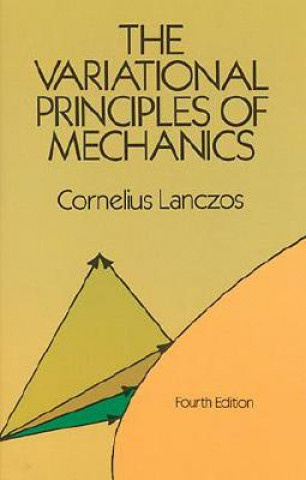
Kod: 02569574
Variational Principles of Mechanics
Autor Cornelius Lanczos
Introduction 1. The variational approach to mechanics 2. The procedure of Euler and Lagrange 3. Hamilton's procedure 4. The calculus of variations 5. Comparison between the vectorial and the variational treatments of mec ... więcej
- Język:
 Angielski
Angielski - Oprawa: Miękka
- Liczba stron: 418
Wydawca: Dover Publications Inc., 1986
- Więcej informacji o książce

125.55 zł
Zwykle: 132.29 zł
Oszczędzasz 6.75 zł

Dostępna u dostawcy
Wysyłamy za 14 - 18 dni
Zobacz książki o podobnej tematyce
-

Chainsaw Man, Vol. 10
42.68 zł -23 % -

Toilet-bound Hanako-kun, Vol. 9
57.68 zł -5 % -

Sapiens A Graphic History, Volume 2
88.69 zł -23 % -

Shatter Me Series 4-Book Box Set
185.25 zł -15 % -

Legend of the Galactic Heroes, Vol. 2
73.89 zł -11 % -

Mein Kampf
138.84 zł -1 % -

Pocket Oxford Latin Dictionary
61.11 zł -23 % -

My First Piano Adventure Lesson Book C
34.83 zł -27 % -

Scott Pilgrim's Finest Hour
47.31 zł -23 % -

Modern Quantum Chemistry
150.82 zł -1 % -

Pie and Pastry Bible
201.46 zł -10 % -

New Total English Intermediate Workbook with Key and Audio CD Pack
80.34 zł -3 % -

Thermodynamics
47.31 zł -23 % -

Floods, Famines, and Emperors
133.79 zł -

A Wanted Man
45.60 zł -5 % -

Talking with Psychopaths
48.92 zł -14 % -

The Doors of Perception and Heaven and Hell
77.52 zł -5 % -

Jolly Phonics Activity Book 3
32.21 zł -15 % -

Tokyo Ghoul: Days
42.68 zł -23 % -

Parenting from the Inside out - 10th Anniversary Edition
81.44 zł -11 % -

Warriors: Dawn of the Clans #1: The Sun Trail
33.62 zł -23 %
Podaruj tę książkę jeszcze dziś
- Zamów książkę i wybierz "Wyślij jako prezent".
- Natychmiast wyślemy Ci bon podarunkowy, który możesz przekazać adresatowi prezentu.
- Książka zostanie wysłana do adresata, a Ty o nic nie musisz się martwić.
Więcej informacji o Variational Principles of Mechanics
Za ten zakup dostaniesz 73 punkty
 Opis
Opis
Introduction 1. The variational approach to mechanics 2. The procedure of Euler and Lagrange 3. Hamilton's procedure 4. The calculus of variations 5. Comparison between the vectorial and the variational treatments of mechanics 6. Mathematical evaluation of the variational principles 7. Philosophical evaluation of the variational approach to mechanics I. The Basic Concepts of Analytical Mechanics 1. The Principal viewpoints of analytical mechanics 2. Generalized coordinates 3. The configuration space 4. Mapping of the space on itself 5. Kinetic energy and Riemannian geometry 6. Holonomic and non-holonomic mechanical systems 7. Work function and generalized force 8. Scleronomic and rheonomic systems. The law of the conservation of energy II. The Calculus of Variations 1. The general nature of extremum problems 2. The stationary value of a function 3. The second variation 4. Stationary value versus extremum value 5. Auxiliary conditions. The Lagrangian lambda-method 6. Non-holonomic auxiliary conditions 7. The stationary value of a definite integral 8. The fundamental processes of the calculus of variations 9. The commutative properties of the delta-process 10. The stationary value of a definite integral treated by the calculus of variations 11. The Euler-Lagrange differential equations for n degrees of freedom 12. Variation with auxiliary conditions 13. Non-holonomic conditions 14. Isoperimetric conditions 15. The calculus of variations and boundary conditions. The problem of the elastic bar III. The principle of virtual work 1. The principle of virtual work for reversible displacements 2. The equilibrium of a rigid body 3. Equivalence of two systems of forces 4. Equilibrium problems with auxiliary conditions 5. Physical interpretation of the Lagrangian multiplier method 6. Fourier's inequality IV. D'Alembert's principle 1. The force of inertia 2. The place of d'Alembert's principle in mechanics 3. The conservation of energy as a consequence of d'Alembert's principle 4. Apparent forces in an accelerated reference system. Einstein's equivalence hypothesis 5. Apparent forces in a rotating reference system 6. Dynamics of a rigid body. The motion of the centre of mass 7. Dynamics of a rigid body. Euler's equations 8. Gauss' principle of least restraint V. The Lagrangian equations of motion 1. Hamilton's principle 2. The Lagrangian equations of motion and their invariance relative to point transformations 3. The energy theorem as a consequence of Hamilton's principle 4. Kinosthenic or ignorable variables and their elimination 5. The forceless mechanics of Hertz 6. The time as kinosthenic variable; Jacobi's principle; the principle of least action 7. Jacobi's principle and Riemannian geometry 8. Auxiliary conditions; the physical significance of the Lagrangian lambda-factor 9. Non-holonomic auxiliary conditions and polygenic forces 10. Small vibrations about a state of equilibrium VI. The Canonical Equations of motion 1. Legendre's dual transformation 2. Legendre's transformation applied to the Lagrangian function 3. Transformation of the Lagrangian equations of motion 4. The canonical integral 5. The phase space and the space fluid 6. The energy theorem as a consequence of the canonical equations 7. Liouville's theorem 8. Integral invariants, Helmholtz' circulation theorem 9. The elimination of ignorable variables 10. The parametric form of the canonical equations VII. Canonical Transformations 1. Coordinate transformations as a method of solving mechanical problems 2. The Lagrangian point transformations 3. Mathieu's and Lie's transformations 4. The general canonical transformation 5. The bilinear differential form 6. The bracket expressions of Lagrange and Poisson 7. Infinitesimal canonical transformations 8. The motion of the phase fluid as a continuous succession of canonical transformations 9. Hamilton's principal function and the motion of the phase fluid VIII. The Partial differential equation of Hamilton-Jacobi 1. The importance of the generating function for the problem of motion 2. Jacobi's transformation theory 3. Solution of the partial differential equation by separation 4. Delaunay's treatment of separable periodic systems 5. The role of the partial differential equation in the theories of Hamilton and Jacobi 6. Construction of Hamilton's principal function with the help of Jacobi's complete solution 7. Geometrical solution of the partial differential equation. Hamilton's optico-mechanical analogy 8. The significance of Hamilton's partial differential equation in the theory of wave motion 9. The geometrization of dynamics. Non-Riemannian geometrics. The metrical significance of Hamilton's partial differential equation IX. Relativistic Mechanics 1. Historical Introduction 2. Relativistic kinematics 3. Minkowski's four-dimensional world 4. The Lorentz transformations 5. Mechanics of a particle 6. The Hamiltonian formulation of particle dynamics 7. The potential energy V 8. Relativistic formulation of Newton's scalar theory of gravitation 9. Motion of a charged particle 10. Geodesics of a four-dimensional world 11. The planetary orbits in Einstein's gravitational theory 12. The gravitational bending of light rays 13. The gravitational red-shirt of the spectral lines Bibliography X. Historical Survey XI. Mechanics of the Continua 1. The variation of volume integrals 2. Vector-analytic tools 3. Integral theorems 4. The conservation of mass 5. Hydrodynamics of ideal fluids 6. The hydrodynamic equations in Lagrangian formulation 7. Hydrostatics 8. The circulation theorem 9. Euler's form of the hydrodynamic equations 10. The conservation of energy 11. Elasticity. Mathematical tools 12. The strain tensor 13. The stress tensor 14. Small elastic vibrations 15. The Hamiltonization of variational problems 16. Young's modulus. Poisson's ratio 17. Elastic stability 18. Electromagnetism. Mathematical tools 19. The Maxwell equations 20. Noether's principle 21. Transformation of the coordinates 22. The symmetric energy-momentum tensor 23. The ten conservation laws 24. The dynamic law in field theoretical derivation Appendix I; Appendix II; Bibliography; Index
 Szczegóły książki
Szczegóły książki
Kategoria Książki po angielsku Mathematics & science Physics Classical mechanics
125.55 zł
- Pełny tytuł: Variational Principles of Mechanics
- Autor: Cornelius Lanczos
- Język:
 Angielski
Angielski - Oprawa: Miękka
- Liczba stron: 418
- EAN: 9780486650678
- ISBN: 0486650677
- ID: 02569574
- Wydawca: Dover Publications Inc.
- Waga: 554 g
- Wymiary: 213 × 137 × 24 mm
- Data wydania: 22. September 1986
Ulubione w innej kategorii
-
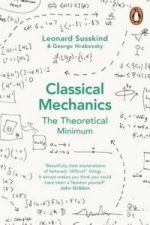
Classical Mechanics
51.84 zł -23 % -

Energy and Civilization – A History
62.92 zł -26 % -
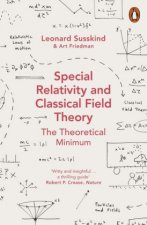
Special Relativity and Classical Field Theory
52.35 zł -15 % -

Gravitation
306.48 zł -12 % -

Classical Mechanics
472.41 zł -
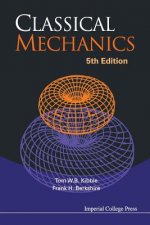
Classical Mechanics (5th Edition)
144.98 zł -
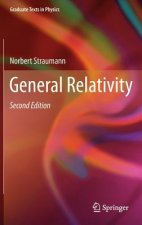
General Relativity
579.24 zł -
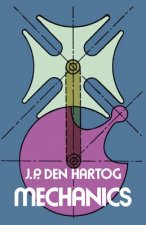
Mechanics
81.35 zł -4 % -

Gravitation
522.65 zł -

On Gravity
91.11 zł -
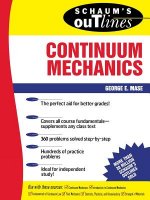
Schaum's Outline of Continuum Mechanics
109.44 zł -5 % -

Quantum String Theory
564.34 zł -
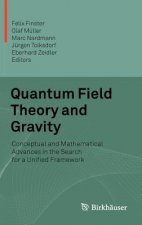
Quantum Field Theory and Gravity
285.64 zł -
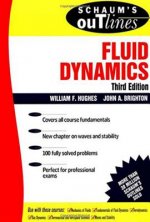
Schaum's Outline of Fluid Dynamics
131.39 zł -3 % -
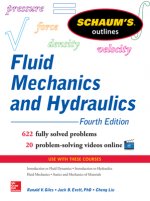
Schaum's Outline of Fluid Mechanics and Hydraulics
119.61 zł -3 % -

Thing Explainer
100.17 zł -15 % -
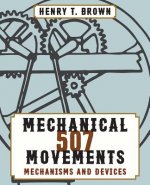
507 Mechanical Movements
85.57 zł -

Introduction to Black Hole Physics
285.54 zł -
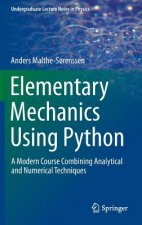
Elementary Mechanics Using Python
226.33 zł -

Concert Halls and Opera Houses
935.67 zł -

Concert Halls by Nagata Acoustics
409.08 zł -

Sonic Wonderland
61.11 zł -23 % -
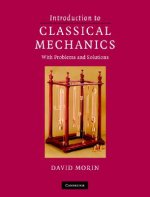
Introduction to Classical Mechanics
385.92 zł -
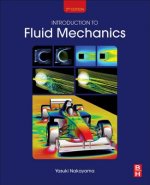
Introduction to Fluid Mechanics
511.98 zł -10 % -

1800 Mechanical Movements, Devices and Appliances (Dover Science Books) Enlarged 16th Edition
141.55 zł -
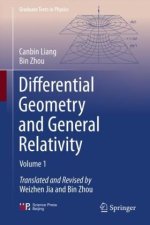
Differential Geometry and General Relativity
432.94 zł -

Principles of Marine Bioacoustics
833.77 zł -

Energy Myths and Realities
235.19 zł -

4th Edition Mastering Engineer's Handbook
125.55 zł -4 % -

Sound: A Very Short Introduction
42.68 zł -23 % -
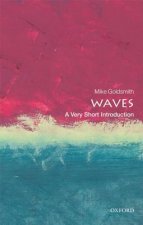
Waves: A Very Short Introduction
57.48 zł -5 % -
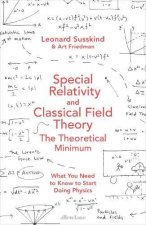
Special Relativity and Classical Field Theory
150.11 zł -

Einstein Gravity in a Nutshell
572.19 zł -

Power Density
154.04 zł -12 % -
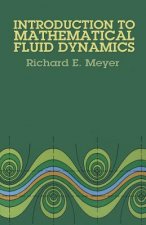
Introduction to Mathematical Fluid Dynamics
51.64 zł -5 % -

Black Hole Blues and Other Songs from Outer Space
51.84 zł -23 % -

Principles of Astrophysics
358.74 zł -8 % -

Turbulent Flows
444.72 zł -

Applied Computational Physics
412.70 zł -

Ways of Hearing
88.69 zł -11 % -

Covariant Loop Quantum Gravity
385.92 zł -
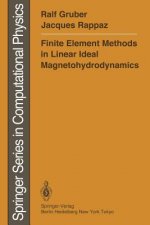
Finite Element Methods in Linear Ideal Magnetohydrodynamics
285.64 zł -
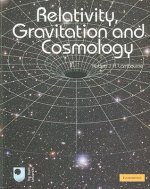
Relativity, Gravitation and Cosmology
461.54 zł -

Anti-Gravity & the Unified Field
65.54 zł -4 % -
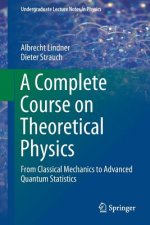
Complete Course on Theoretical Physics
358.74 zł -8 % -

Feynman Lectures on Gravitation
361.86 zł -

Physics of Energy
347.66 zł -

Cosmology for the Curious
217.88 zł -
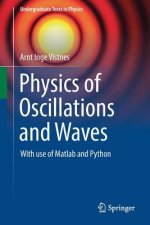
Physics of Oscillations and Waves
451.97 zł
zadowolonych klientów
Od roku 2008 obsłużyliśmy wielu miłośników książek, ale dla nas każdy był tym wyjątkowym.
Copyright! ©2008-24 libristo.pl Wszelkie prawa zastrzeżonePrywatnieCookies


 21 milionów książek
21 milionów książek Dostawa 10.99 zł
Dostawa 10.99 zł (32) 444 93 66 (8-15.30h)
(32) 444 93 66 (8-15.30h)